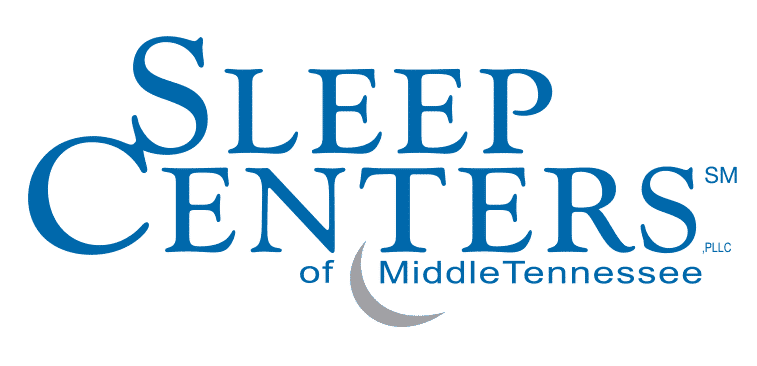You already know that regular exercise is vital to good health and may reverse disease, but what about a sleep disorder? Does exercise help sleep apnea too? Fortunately yes, it does!
Getting up and moving your body not only helps you look good and feel good, but regular, moderate exercise can support weight loss which may help treat or even prevent your sleep apnea symptoms.
Physical activity and exercise isn’t the only exercise that can help relieve sleep apnea symptoms. Oral exercises that target the mouth and throat can also reduce symptoms and help you breathe easier. Below, we discuss the benefits of both.
But before we explore how these exercises can help reduce symptoms of sleep apnea, let’s take a look at the different kinds of sleep apnea and how they affect your body.
What is Sleep Apnea?
Sleep apnea is a sleep disorder where the airway is either partially obstructed or completely obstructed. This obstruction hinders your ability to breathe while sleeping. The best-known symptoms of sleep apnea are breathing cessation during sleep and loud snoring. Forty percent of the population snores, with an estimated 80 percent of snorers having OSA.
There are three types of sleep apnea (although OSA is the most common):
- Obstructive Sleep Apnea (OSA): When a physical blockage inhibits breathing and causes temporary breathing cessation.
- Central Sleep Apnea (CSA): When the brain has difficulty controlling respiration muscles, leading to breathing difficulties.
- Mixed Sleep Apnea, or Complex Sleep Apnea: When a person has OSA and CSA, and experiences blockages related to both.
Most likely, if you’re reading this article you or a loved one has been diagnosed with sleep apnea, or you believe you may have sleep apnea. If you’ve been diagnosed and tested, then your treatment protocol is determined by the number of breathing interruptions you experience per hour.
People with mild OSA experience 5-15 breathing interruptions per hour, patients with moderate OSA experience 16-30 interruptions per hour, and people with severe OSA experience more than 31 breathing interruptions per hour.
Any number of interruptions is disruptive to sleep, and exercise can benefit all three levels of severity.
As you likely already know, not breathing while you’re sleeping is a serious issue with a number of undesirable and potentially dangerous effects on your body. Fortunately, exercise can benefit your health both directly and indirectly by reducing symptoms and preventing sleep apnea.
How Sleep Apnea Affects The Body
Sleep apnea affects more bodily systems than many realize, from the brain to the heart to reproductive organs. Oftentimes doctors prescribe medications and treatments that don’t work as well as they could because sleep apnea, an underlying cause, isn’t being addressed. For instance, insulin and blood pressure medication may not work as well as expected if your sleep apnea is untreated.
When it comes to OSA’s ill effects on the body, there are many symptoms— which are also often warning signs too— where exercise has an even greater impact because it’s also helping mitigate the effect of sleep apnea as well.
One of the biggest impacts OSA can have on you is a dramatic decrease in your sleep quality. This is because even after a full night’s sleep, the fatigue and physical side effects caused by breathing struggles often leave you feeling exhausted in the morning.
Here are other ways sleep apnea can worsen or even cause health conditions or diseases:
- Excessive Daytime Sleepiness
- High Blood Pressure
- Acid Reflux or GERD
- Brain fog or memory loss
- Cardiovascular disease or heart failure
- Pre-diabetes or diabetes
- Erectile dysfunction
Additionally, obstructive sleep apnea symptoms get worse with weight gain and age. This is why it’s so important to adhere to your treatment, or get treated if you think you have sleep apnea. Your symptoms won’t improve on their own, and they can even worsen if left alone.
How is Sleep Apnea Treated?
Before delving into how exercise can treat sleep apnea, it’s important to understand that while weight loss can help OSA symptoms, it won’t cure the disorder.
The most common and most effective treatment for sleep apnea or other sleep disordered breathing is CPAP therapy.
CPAP, or continuous positive airway pressure, works by providing sleep apnea patients with a constant stream of air that holds the airway open and keeps it open during sleep.
Numerous studies demonstrate that consistent use of a CPAP device can resolve cognitive issues created by sleep apnea, and even help prevent cardiovascular disease and heart attacks.
In addition to CPAP, another common recommendation for treating sleep apnea is weight loss. As mentioned earlier, weight loss can help OSA symptoms, although it won’t cure the disorder. However, since symptoms can worsen if you gain weight, it makes sense that losing weight can help you reduce symptoms and sleep better.
Related: What Makes Sleep Apnea Worse? 8 Things to Watch Out For
How Exercise Can Treat Sleep Apnea
Obstructive sleep apnea is more common in people who are overweight or obese. For some, it may be the leading risk factor for their sleep apnea. This is because excess weight in your neck can block your upper airway and force air through a tightly restricted space. This is what creates the loud snoring that characterizes OSA. Similarly, extra weight around the middle can decrease lung volume and reduce lung capacity.
If you’re overweight or obese, which put you at risk for sleep apnea, one of the best things you can do for yourself is to lose those extra pounds. Reducing your excess body weight can relieve the extra pressure around your lungs and airways, which can open your airways more and reduce snoring. Even ten to fifteen percent weight loss when obese can reduce OSA severity by 50 percent.
One study demonstrated that weight loss in moderately obese OSA patients may alleviate the need for long-term CPAP therapy. Additionally, weight loss when combined with CPAP therapy may result in even greater weight loss.
This is where physical activity comes in. Exercise is an important activity associated with weight loss. Although weight loss can reduce severity of OSA by 50 percent, exercise’s contribution to that weight loss may not even be the most beneficial aspect if you have OSA.
The Role of Exercise and Physical Activity in Treating (and Preventing) Sleep Apnea
If you haven’t been diagnosed with sleep apnea, but are at risk (sleep apnea is hereditary), it makes sense to reduce your risk of developing the sleep disorder.
Low activity levels throughout the day are a major contributor. Whether you’re working in an office or experiencing physical limitations, it may not always be easy to get more activity, but exercise doesn’t have to be intense to be effective. Recent research found that simply increasing your overall activity level could reduce your risk, including standing or doing gentle activities.
This study showed that compared to more active participants, those who spent four or more hours per day watching television had a 78 percent higher OSA risk, while those with sedentary jobs had a 49 percent higher risk. On the other side, the study found that more active participants had a much lower risk of sleep apnea compared to the others.
Study leader Tianyi Huang, assistant professor and associate epidemiologist at the Brigham and Women’s Hospital and Harvard Medical School says “We saw a clear relationship between levels of physical activity, sedentary behavior and OSA risk. People who followed the current World Health Organization physical activity guidelines of getting at least 150 minutes of moderate activity per week, and who spent less than four hours per day sitting watching TV, had substantially lower OSA risk.”
While more activity reduces the risk further, any increase in physical activity or reduction in sedentary hours can potentially lower your OSA risk. So whether you’re into aerobic exercise, yoga, or just taking a walk each day, just getting off the couch and getting some exercise is a great first step for preventing obstructive sleep apnea.
Throat Exercises for Sleep Apnea
Apart from aerobic exercise supporting weight loss, performing additional nose, mouth, and throat exercises can help reduce or even eliminate snoring.
Obstructive sleep apnea and snoring occur because your airways are blocked by floppy or protruding airway muscles. These exercises work by strengthening or toning airway muscles, repositioning the tongue, and promoting breathing through your nose during sleep.
Myofunctional therapy exercises for sleep apnea, otherwise known as oropharyngeal exercise, targets the soft tissue of the face, neck, and mouth. This helps to improve your tongue position and your oral rest posture.
Research indicates myofunctional therapy reduces the severity of sleep apnea. One meta-analysis demonstrated a drop in AHI (apnea-hypopnea index) from 24.5 to 12.3 when using myofunctional therapy as treatment. Essentially decreasing severity from moderate apnea to mild apnea.
Doing mouth and throat exercise during the day can help keep these muscles toned and prevent them from vibrating too much while you sleep, reducing snoring and treating mild obstructive sleep apnea. The effectiveness of these exercises can increase when used in combination with a CPAP device and healthy lifestyle choices.
Additionally, breathing exercises can help sleep apnea by opening and strengthening your airway muscles. These can also improve your nasal breathing and stabilize your airways during sleep.
If you’re looking for OSA treatment options that exercise your mouth and throat, we recommend using ExciteOSA. This device trains your tongue and upper airway muscles to stay in the correct position as you sleep, helping you sleep better and breathe easier.
When to Consult an Expert
Lifestyle changes can have a positive effect on your sleep apnea, but depending on the severity of your apnea, they may not be enough. Your sleep specialist can guide you to the right treatment options for you.
If you’re undiagnosed but suspect you have sleep apnea, check out our sleep quiz. It can help you assess your symptoms and help you decide if further testing for sleep apnea is needed.
When struggling to get a good night’s sleep, a consultation and sleep study can make all the difference. Contact Sleep Centers of Middle Tennessee today to schedule a consultation and see what treatment options will work for you.
Obstructive sleep apnea is a condition you definitely don’t want to wait to treat, so an easy and brief sleep evaluation could be the difference between another night of poor sleep, and the restful sleep you deserve.
References
Watson, Stephanie. “The Effects of Sleep Apnea on the Body.” Healthline, Healthline Media, 5 July 2019, www.healthline.com/health/sleep-apnea/effects-on-body.
Cowan, Douglas C, and Eric Livingston. “Obstructive Sleep Apnoea Syndrome and Weight Loss: Review.” Sleep Disorders, Hindawi Publishing Corporation, 2012, www.ncbi.nlm.nih.gov/pmc/articles/PMC3581237/.
MM;, Loube DI;Loube AA;Mitler. “Weight Loss for Obstructive Sleep Apnea: The Optimal Therapy for Obese Patients.” Journal of the American Dietetic Association, U.S. National Library of Medicine, pubmed.ncbi.nlm.nih.gov/7963174/.
“Want to Avoid Sleep Apnea? Get off the Sofa | Health News | Us News.” U.S. News & World Report, U.S. News & World Report, www.usnews.com/news/health-news/articles/2021-07-22/want-to-avoid-sleep-apnea-get-off-the-sofa. Camacho M, Certal V, Abdullatif J, et al. Myofunctional therapy to treat obstructive sleep apnea: A systematic review and meta-analysis. Sleep. 2015;38(5):669–675. Published 2015 May 1. doi:10.5665/sleep.4652

